I. Introduction
In our lives, our beloved pets, whether they are furry companions or feathered friends, bring joy, companionship, and unconditional love. However, they can also make a mess, especially when it comes to their grooming needs. Pet cleaning wipes can be a valuable tool for keeping your pet clean and healthy between baths.
While store-bought pet cleaning wipes can be convenient, they often contain harsh chemicals, artificial fragrances, and non-biodegradable materials that can irritate your pet’s skin and harm the environment. Fortunately, making your own pet cleaning wipes using natural ingredients and eco-friendly practices is a simple and rewarding alternative.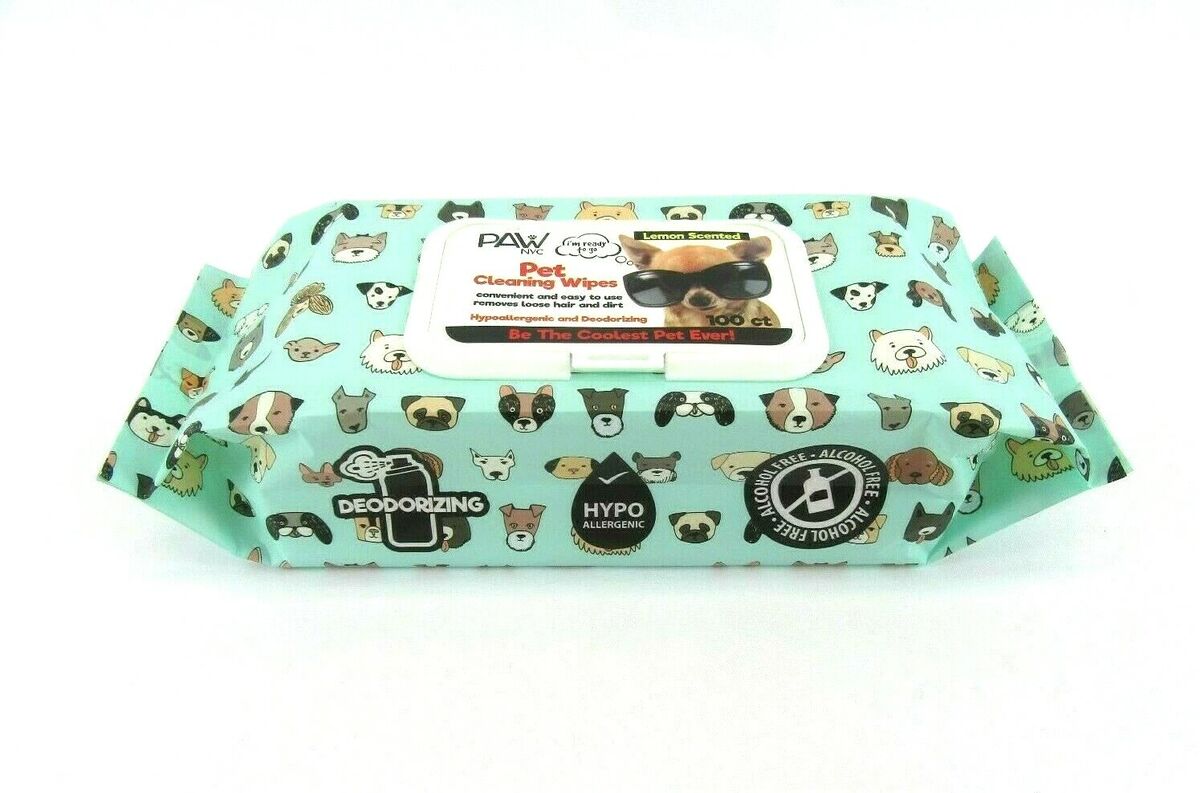
II. Essential Ingredients for DIY Pet Cleaning Wipes
A. Water: Water is the primary ingredient and serves as the base for the cleansing solution. Choose distilled or filtered water for the purest results.
B. Mild Cleansers: Gentle cleansers like aloe vera gel, witch hazel, or castile soap effectively remove dirt and grime without irritating the skin.
-
Aloe vera gel: Aloe vera gel has anti-inflammatory and soothing properties that can calm and moisturize the skin.
-
Witch hazel: Witch hazel is a natural astringent that helps cleanse and tighten pores.
-
Castile soap: Castile soap is a mild, plant-based soap that is gentle on the skin and free of harsh chemicals.
C. Moisturizers: Moisturizing ingredients like glycerin or coconut oil help keep your pet’s skin hydrated and prevent dryness.
-
Glycerin: Glycerin attracts and retains moisture, helping to keep the skin hydrated and supple.
-
Coconut oil: Coconut oil is a natural moisturizer that hydrates and nourishes the skin.
D. Conditioners: Conditioners, such as panthenol or shea butter, soften and smoothen the fur, leaving it shiny and manageable.
-
Panthenol: Panthenol is a provitamin of vitamin B5 that helps to moisturize and condition the fur.
-
Shea butter: Shea butter is a natural moisturizer that nourishes and softens the fur, leaving it shiny and manageable.
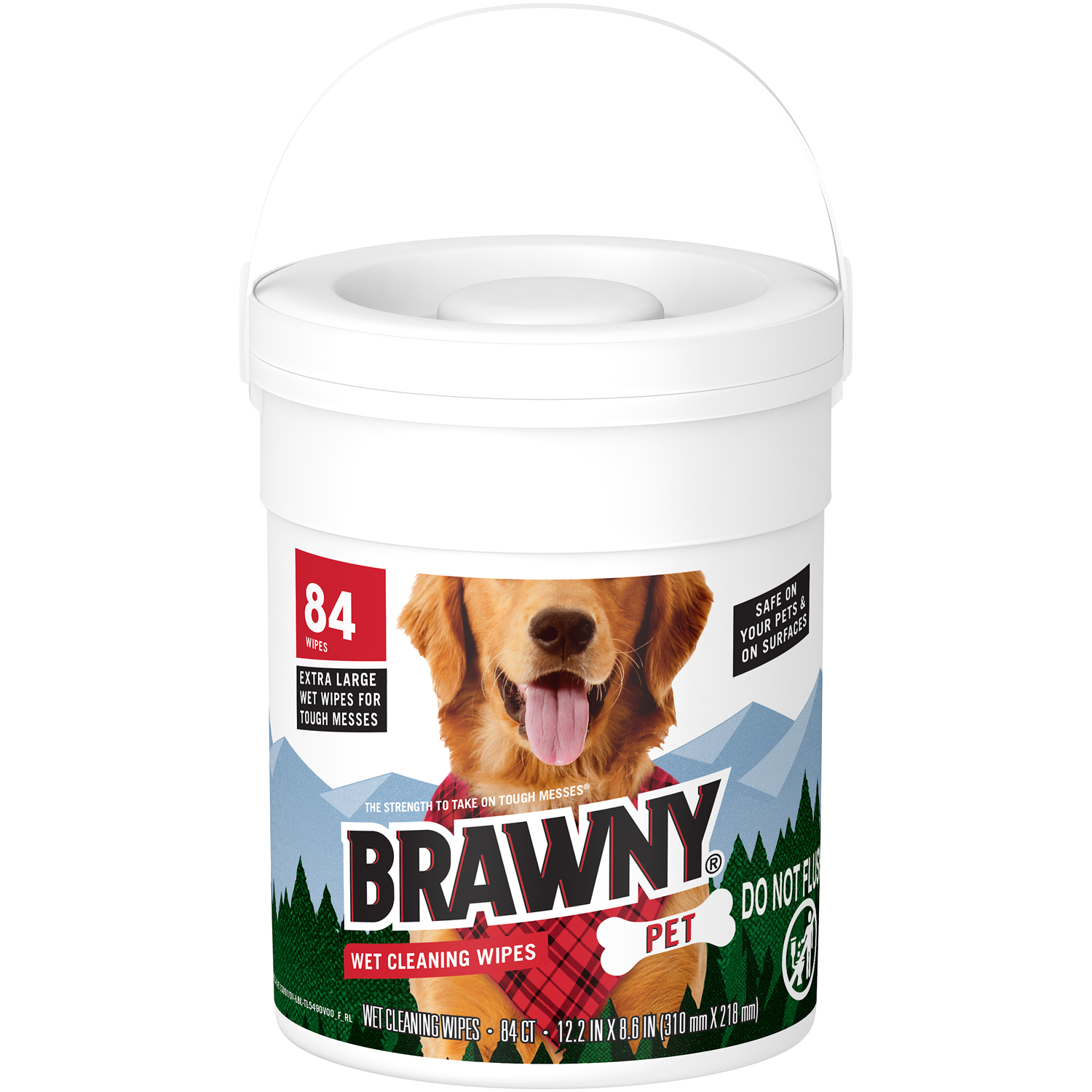
III. DIY Pet Cleaning Wipe Recipes
A. Basic DIY Pet Cleaning Wipes:
Ingredients:
-
1 cup distilled or filtered water
-
1/4 cup aloe vera gel
-
1 tablespoon witch hazel (optional)
-
1 teaspoon castile soap
-
1 teaspoon glycerin
Instructions:
-
Combine all ingredients in a clean spray bottle.
-
Shake well to mix thoroughly.
-
Cut up soft, absorbent cloth into squares or rectangles.
-
Moisten cloth squares with the cleansing solution.
-
Store damp wipes in an airtight container or resealable bag.
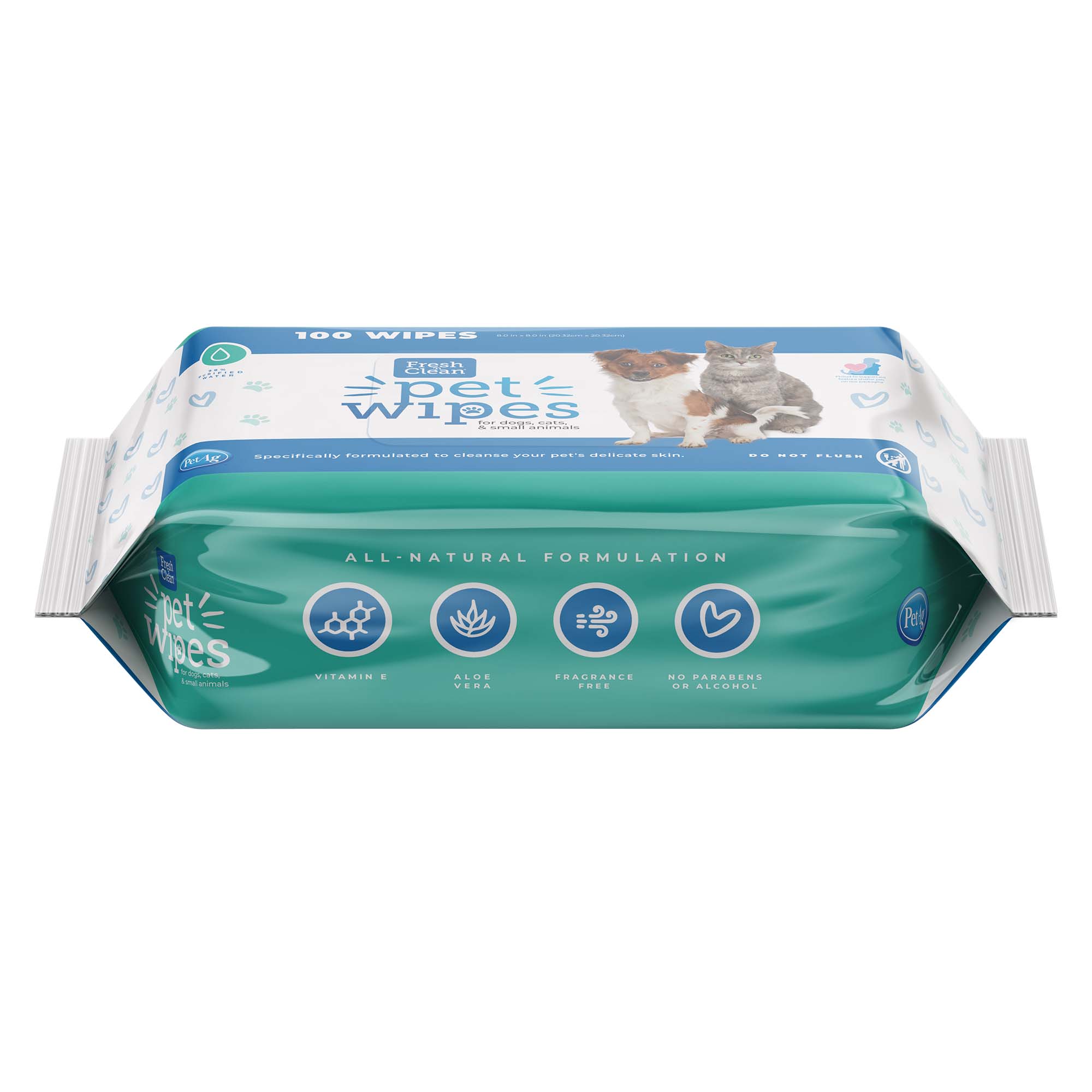
B. Soothing DIY Pet Cleaning Wipes for Sensitive Skin:
Ingredients:
-
1 cup distilled or filtered water
-
1/4 cup chamomile tea (cooled)
-
1 tablespoon aloe vera gel
-
1 teaspoon glycerin
Instructions:
-
Steep chamomile tea bags in hot water for 5-10 minutes.
-
Remove tea bags and let the tea cool completely.
-
Combine cooled chamomile tea, aloe vera gel, and glycerin in a clean spray bottle.
-
Shake well to mix thoroughly.
-
Cut up soft, absorbent cloth into squares or rectangles.
-
Moisten cloth squares with the cleansing solution.
-
Store damp wipes in an airtight container or resealable bag.
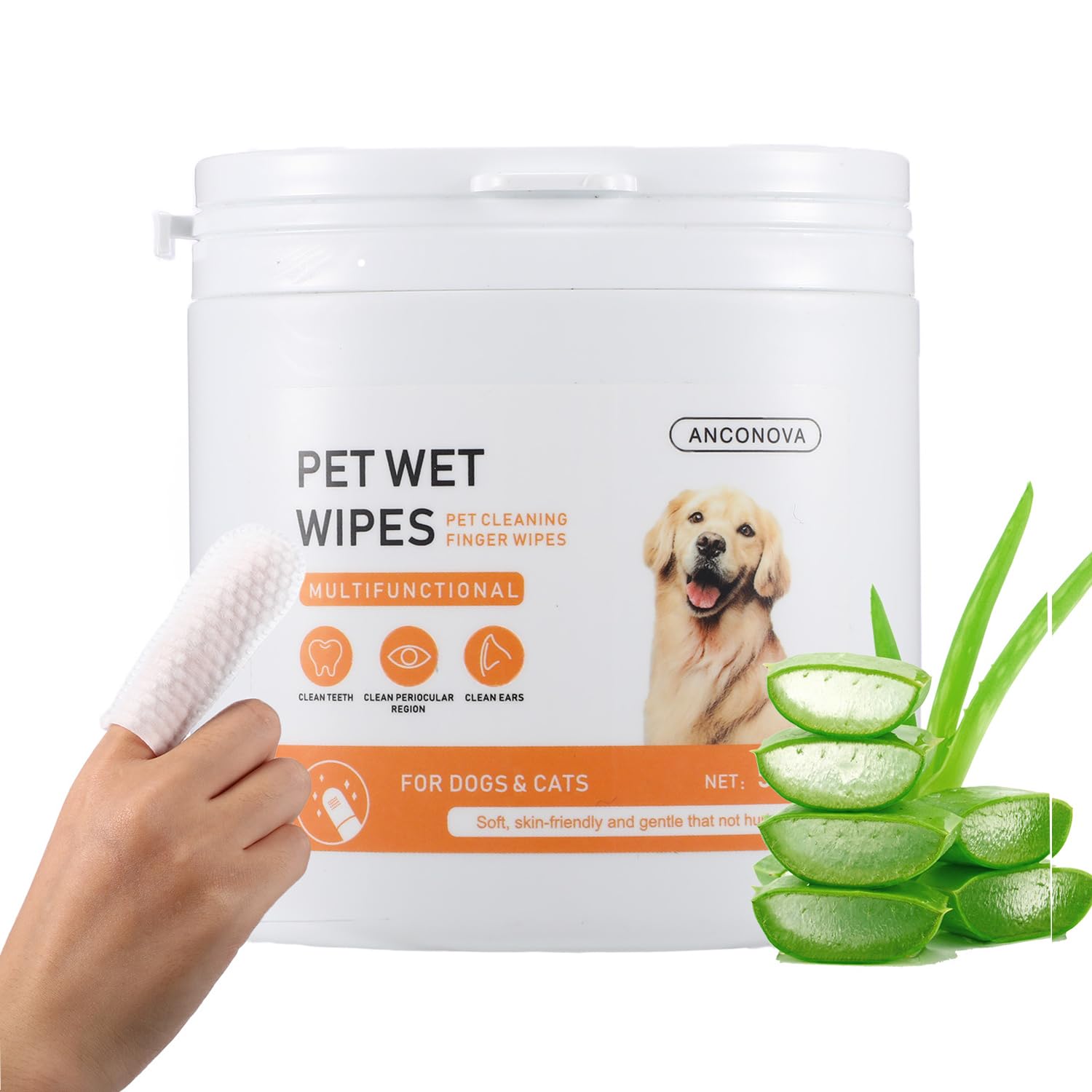
IV. Tips for Using DIY Pet Cleaning Wipes
A. Introduce Wipes Gradually: Allow your pet to get accustomed to the sensation of the wipes before regular use. Gently wipe a small area of your pet’s fur and observe their reaction.
B. Gentle Application: Use a gentle wiping motion, avoiding harsh rubbing or scrubbing that could irritate the skin. Wipes should cleanse effectively without needing excessive force.
C. Separate Wipes for Each Area: Use a fresh wipe for each area to prevent cross-contamination and potential infections. This is especially important when cleaning around the eyes, ears, or genitals.
D. Proper Disposal: Discard used wipes in the trash and avoid flushing them down the toilet to prevent environmental damage. Most pet cleaning wipes are not biodegradable and can clog plumbing systems.
V. Additional Tips for Making DIY Pet Cleaning Wipes
A. Use Natural and Organic Ingredients: Whenever possible, opt for natural and organic ingredients to minimize the risk of irritation or allergies. Look for ingredients that are certified organic or sourced from reputable suppliers.
B. Experiment with Different Recipes: Try different recipes to find the one that best suits your pet’s needs and preferences. Adjust the amount of ingredients based on your pet’s skin type, fur texture, and any specific sensitivities.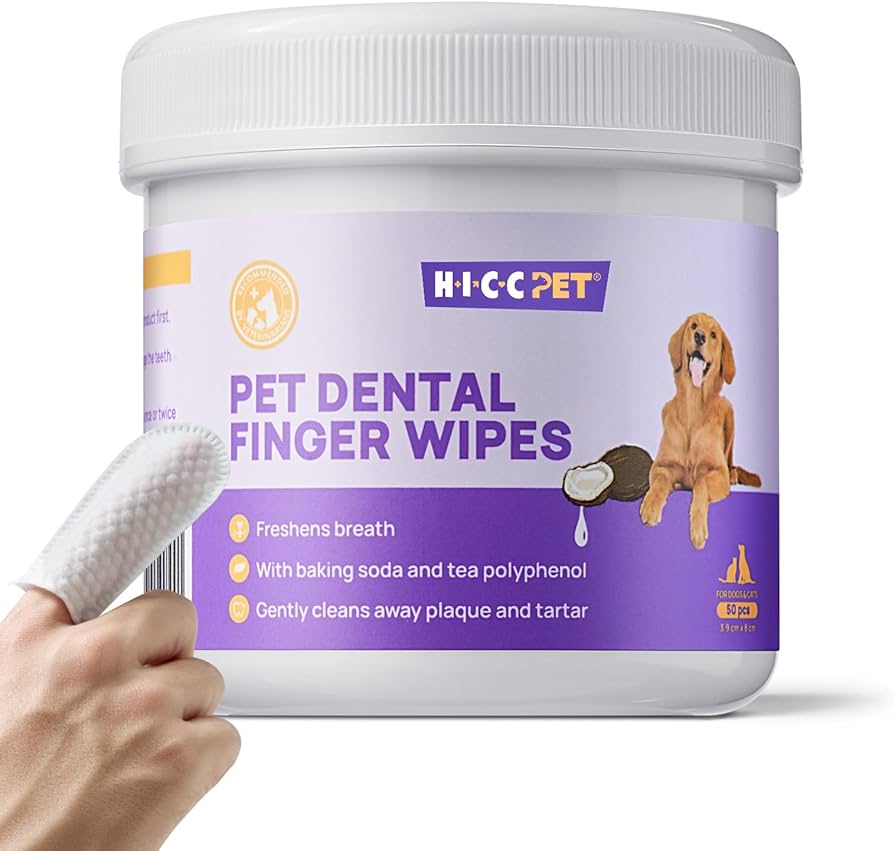
C. Adjust Ingredients as Needed:
-
For pets with dry skin, consider adding a higher amount of moisturizer like glycerin or coconut oil.
-
For pets with oily skin, reduce the amount of moisturizer or omit it altogether.
-
For a refreshing scent, add a few drops of a pet-safe essential oil like lavender or chamomile (avoid citrus oils which can irritate pets).
D. Label and Store Properly: Label your wipes clearly with the ingredients and date of preparation. This helps you track the freshness of the wipes and avoid using expired solutions. Store wipes in a cool, dark place to prevent spoilage. An airtight container or resealable bag will help retain moisture and keep wipes fresh.
VI. Environmental Considerations for DIY Pet Cleaning Wipes
A. Reusable Cloth Wipes: Use reusable cloth wipes instead of disposable wipes to further reduce waste and environmental impact. Opt for soft, absorbent cloths like flannel or bamboo that are gentle on your pet’s skin. Wash and dry used cloth wipes after each use for continued hygiene.
B. Biodegradable Ingredients: Choose biodegradable ingredients like castile soap and glycerin to minimize environmental harm. Biodegradable ingredients break down naturally after disposal, reducing their impact on landfills.
C. Reusable Containers: Reuse old containers or opt for reusable glass or stainless steel containers for storing wipes. Repurposing containers reduces waste and creates a more sustainable approach to pet hygiene.
D. Proper Disposal of Waste: Dispose of any non-biodegradable materials responsibly, such as used cloth wipes, in the trash. Avoid littering or flushing wipes down the toilet, which can clog plumbing systems and contribute to environmental pollution.
VII. Conclusion: A Healthier and More Eco-Friendly Approach to Pet Hygiene
DIY pet cleaning wipes offer a healthier, more eco-friendly, and cost-effective alternative to store-bought wipes. By using natural ingredients, reusable cloth wipes, and eco-friendly practices, you can maintain your pet’s hygiene while reducing your environmental footprint. Remember, a clean pet is a happy pet, and a happy pet contributes to a happy and healthy home environment. With a little planning and creativity, you can create DIY pet cleaning wipes that are safe, effective, and kind to the planet. So, grab your favorite spray bottle, some natural ingredients, and start whipping up a batch of DIY pet wipes today! Your furry (or feathered) friend will thank you for it.